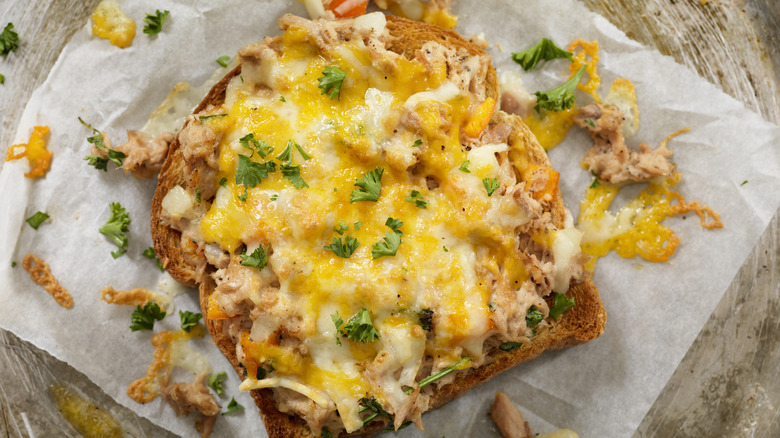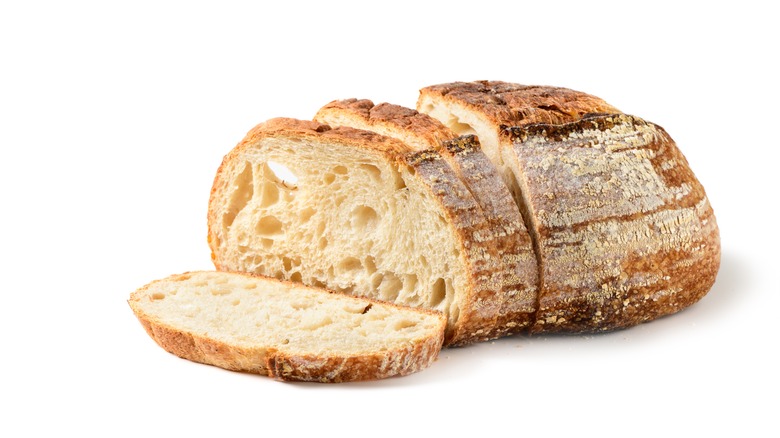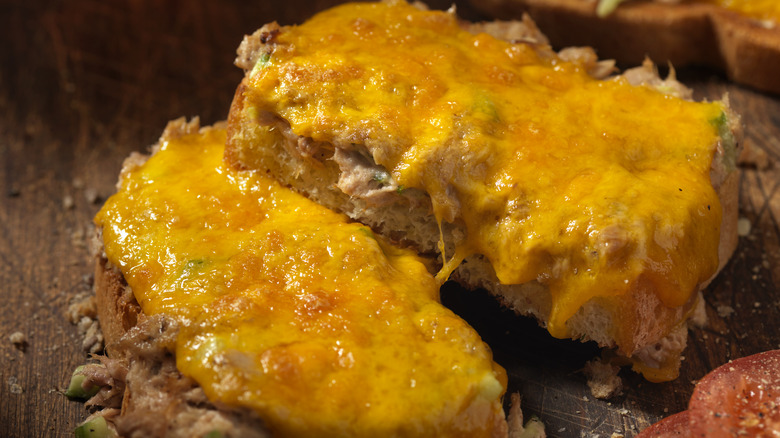For The Best Open-Faced Tuna Melt, You Absolutely Need Thicker Bread
If you've ever had an open-faced tuna melt, you know that the combination of creamy tuna salad on crispy toasted bread, topped with melted cheese, is delicious. Not only that, but they're easy to make, and you probably have all the ingredients you need in your pantry right now. There are a lot of delicious ways to make a great tuna melt, but if you're going for an open-faced version, it's best to use a thick slice of bread.
When you make the sandwich open-faced, you need that single slice on the bottom to do a little more heavy lifting, both figuratively and literally. It's all about having the proper proportions of bread to the tuna and cheese filling. If you go with a slice of bread that's too thin, the heavy, mayo-based tuna salad mixture will be too moist for the bread to hold up. So, how thick are we talking?
Open-faced tuna melt sandwiches need flavor balance
There are a lot of opinions when it comes to making a tuna melt. There's the tuna, of course, and the decision between oil- or water-packed cans. Then there's the choice of mayonnaise (which has some impassioned brand loyalists) and a choice of cheese. But most importantly, there's the bread, from the variety to whether or not you should toast it. However, one thing that's not up for debate is the thickness of the bread if you're making your melt as an open-faced sandwich.
The most important reason why an open-faced sandwich needs a thick slice of bread is for basic mechanics. When you make something open-faced, you eliminate the top slice of bread. However, you're not cutting down on the amount of stuff that goes inside the sandwich, and filling requires bread. Tuna salad mixed with mayo is both fatty and fishy, and it needs bread to cut those elements. When you use a single piece of bread as the base, you will make up for that lost top layer, so your slice should be about 1 inch thick. A sandwich with two pieces of bread should have ½-inch thick slices.
Thick bread isn't just for flavor, either. Depending on what variety of bread you choose, you'll need a little more heft to hold up to a heap of tuna salad. For instance, a thin slice of white bread will get squashed flat under a hefty layer of tuna.
Slice your bread by texture
Toasting the bread for your sandwich is also important. Some tuna melt-makers might not agree with this extra step, but a well-toasted slice of bread will give your sandwich more structure thanks to the Maillard reaction. When you pop your bread into the toaster or crisp it in the oven, the moisture from the slice evaporates, and the structure of the bread firms up. Toasted bread also gives your sandwich a satisfying crunch, which is a nice contrast to the soft tuna. Toasting is especially important if you are using a softer style of bread that's prone to flattening out, like white sandwich bread.
The basic recipe for a tuna melt is simple, as long as you pay attention to the bread. With that said, as long as you have thick enough slices, you can try any variation of a tuna melt you'd like. Try experimenting with different types of bread, like rye, sourdough, or even an everything bagel. You can also use any type of meltable cheese like gouda or gruyere, and it's not unheard of to add a layer of bacon or avocado (or both). Between slicing it thick and giving the bread a good toast, as long as you always have a good, sturdy base for stacking your tuna and cheese, you'll always crush the tuna melt assignment.


